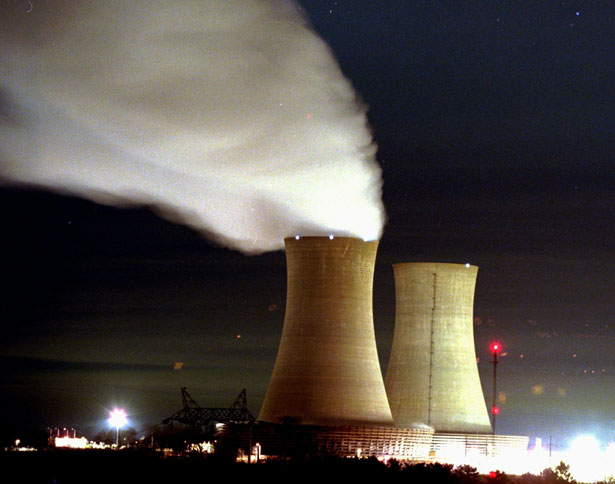
Clouds spew from a cooling tower at PECO's nuclear generating station in Limerick, Pennsylvania. (AP Photo/George Widman, file)
A new film about nuclear energy, Pandora’s Promise, which appears in theaters in June and will be broadcast by CNN in the fall, features five “converts” who argue that the dire threat of climate change requires humanity to embrace nuclear power as an alternative to fossil fuels. Below, Mark Hertsgaard, The Nation’s environment correspondent, who has been covering the nuclear industry since investigating it for his book Nuclear Inc. (Pantheon, 1983), lays out the myths the film peddles, followed by the facts about nuclear energy.
1. Myth: Pragmatic environmentalists are coming around on nuclear power. Fact: The public and the overwhelming majority of environmental groups continue to reject nuclear power. Of the ten leading environmental organizations in the US—the Sierra Club, Greenpeace, The National Wildlife Federation, The Natural Resources Defense Council, Defenders of Wildlife, Environmental Defense, The National Audubon Society, The Nature Conservancy, The Wilderness Society, The World Wildlife Fund—not one supports nuclear power, despite the threat of climate change.
2. Myth: Energy efficiency is a waste of time and resources compared to nuclear. Fact: Nuclear plants are extremely costly and time-consuming to build. Per dollar invested, energy efficiency delivers seven times more emissions reductions than nuclear power does, according to the Rocky Mountain Institute. A study by McKinsey and Company found that improved efficiency could cut US energy consumption by 23 percent by 2020 while saving $680 billion. Investing in nuclear means taking the slowest, costliest route to fighting global warming—which means making it worse.
3. Myth: Solar, wind, efficiency and other alternatives to nuclear power and fossil fuel are marginal, niche products. Fact: Wind and solar are by far the fastest growing parts of the global energy business. In 22 states, rooftop solar is now installed for free and provides guaranteed savings to residential and business customers. Joined to a smart grid, wind and solar can provide 80 percent of America’s electricity consumption, according to the US National Renewable Energy Laboratory.
4. Myth: Pursuing nuclear breeder reactors carries no significant risks. Fact: These reactors would dramatically increase the risk of nuclear war. Breeder reactors consume and produce vast amounts of plutonium, the essential ingredient in manufacturing a nuclear weapon. Once “reprocessed,” plutonium from a breeder reactor can be diverted to producing weapons. This is how India produced its first nuclear weapon, in 1974.
5. Myth: Nuclear radiation is not as deadly as people think. Fact: The film claims that the 1986 Chernobyl meltdowns killed only 56 people—the so-called liquidators, who entered the plant in the initial hours of the accident. Yet even the UN International Atomic Energy Agency, an organization committed to promoting nuclear power, concluded that Chernobyl would cause 4,000 cancers. The UN Scientific Committee on the Effects of Atomic Radiation says that Chernobyl caused 6,000 thyroid cancers among children, with “many more” such cancers projected in the years ahead. The European Environment Agency projects that Chernobyl will cause between 17,000 and 68,000 cancer deaths over the 50 years following the 1986 accident, as well as additional cardiovascular and immunological diseases.
For more on the film and the dangerous myths it spreads about nuclear energy, read the conversation between Mark Hertsgaard and Terry Tempest-Williams, Pandora’s Terrifying Promise: Can Nuclear Power Save the Planet?


